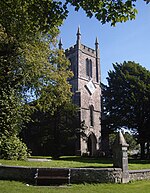Ashton House, Cumbria
BeethamCountry houses in CumbriaGrade II* listed houses in CumbriaHouses completed in 1678

Ashton House is a large country house in Beetham in Cumbria. It is a Grade II* listed building.
Excerpt from the Wikipedia article Ashton House, Cumbria (License: CC BY-SA 3.0, Authors, Images).Ashton House, Cumbria
Geographical coordinates (GPS) Address Nearby Places Show on map
Geographical coordinates (GPS)
| Latitude | Longitude |
|---|---|
| N 54.20845 ° | E -2.77431 ° |
Address
LA7 7AX
England, United Kingdom
Open on Google Maps










